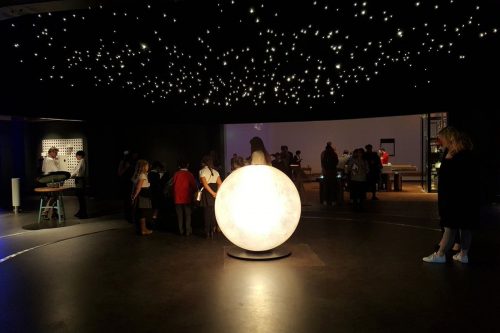It takes some effort for a science museum to open an exhibition about science and technology that upsets scientists, but London’s Science Museum has managed it.
Some are upset that the lead sponsor of an exhibition to promote science and technology is a firm built on big engineering, an oil firm – Statoil. Rather more are upset that a museum that used to charge to see anything at all, will be once more charging, for a small part of the museum.
The Wonderlab gallery is for children, to encourage them to get interested in the sciences, and as such the introduction of charges to a previously free display has riled some commentators.
What’s being overlooked is that school visits remain free. There is indeed a charge for families turning up at weekends, but the revamp and enlargement of the former Launchpad Gallery is aimed at doubling the number of school visits to 200,000 pupils per year. For free.
This is also an expensive display. The objects aren’t, but there’s a lot of staff around to educate the kids playing with the toys to explain how things work.
It’s turning fun into education, and that’s not cheap — just ask a teacher. This is essentially a giant indoor playground, but where each item is designed to spark an interest in the wider world. That was the original remit of museums, to educate.
Here it is education as entertainment, and a significant move on from older displays which memorably had buttons to press, but were thin metal pins designed deliberately to make pressing them repeatedly a bit painful, so kids would wander off.
It’ll take some explaining as to why a children’s slide should cost money to use, even if it has been specially designed to show the effects of friction and gravity — but around the corner are lots more exhibits that have a more human hands-on approach from teaching staff.
But does it justify the charge?
It seemed on my early morning visit that the core audience were having not just a good time, but were — in places — getting interested in the why things behaved they way they did, although it was clear that some exhibits were for running up to, pressing a button and running away.
In the past, it was easier to sell science and technology to young people as science was still BIG. It was big industry and big chemistry, everything was visible, often huge and impressive.
Today science is small, working at levels that are invisible to the naked eye, so it becomes harder to simply point at something an elicit a wow response. Point at a steam engine, and people see the engineering. Point at a smartphone, and they see an anonymous lump of plastic.
Science is more important than ever, but harder to sell.
A gallery of educational fun may do the job of eliciting wows from future scientists.
In the year of the Millennium, it would have cost a family £13 for two adults and two kiddies to go inside any part of the Science Museum. Adjusted for inflation, that’s the equivalent of £20 today.
The Wonderlab will cost the same family £22.50, although an annual pass is available for £39.
It’s not the cheapest day out (and the entry ticket is for the whole day), but when compared to the cost of other venues to visit in London, it compares fairly well.












Ian, a brilliant report of your visit, and one to entice a visit. As an octogenarian, loved the analogy of the steam engine and the smartphone!
Thanks for your thoughtful piece. Really interesting.
Hi,
Did you actually visit the gallery before the charges were brought in? It was not button pushing, it was largely the same, also interactive and very fun. There are only a few new exhibits, and in place of the slides was a large machine where the kids all co-operated to move small balls around. This was particularly good as it required them to work and organise together, which is very rare in play situations. The slides are of a lower educational value without necessarily even being any more fun.
Moreover, it’s not just families who visit. When we visit (usually me and my older son) we always bring one or more kids from our neighbourhood with us and I have often taken small groups of three or four children from my area.
It was a challenge to bring those kids to the alien territory of South Kensington, but it was always rewarding and the Launchpad (as it was) was the highlight. That’s now not possible for me as while previously I would stump up the bus fare, their parents will not give them money for admission. So while my family can consider an annual pass, I can’t pass that on to the kids in the neighbourhood that used to accompany us on trips.
In the craft education events I am professionally involved in, where we have to charge we charge only the adults and not the kids. This makes it more accessible for exactly these kind of visiting situations.
What is even more galling is that access to the talks is now restricted to those who’ve paid. This is disappointing for a number of key reasons:
1. unlike many things in our society, science is actually meritocratic and something that with the right motivation can transform the lives of kids from challenging backgrounds. They are now cutting off a lot of those kids from a valuable and enjoyable educational opportunity. It was science that got my grandfather out of poverty.
2. life in London is hard enough for lower earners who still make up the majority of the city’s population and do actually pay taxes that fund the museum; free activities for kids are vital for those of us who cannot afford to take long holidays or often any holidays at all, and educational yet fun free activities for kids are fantastic.